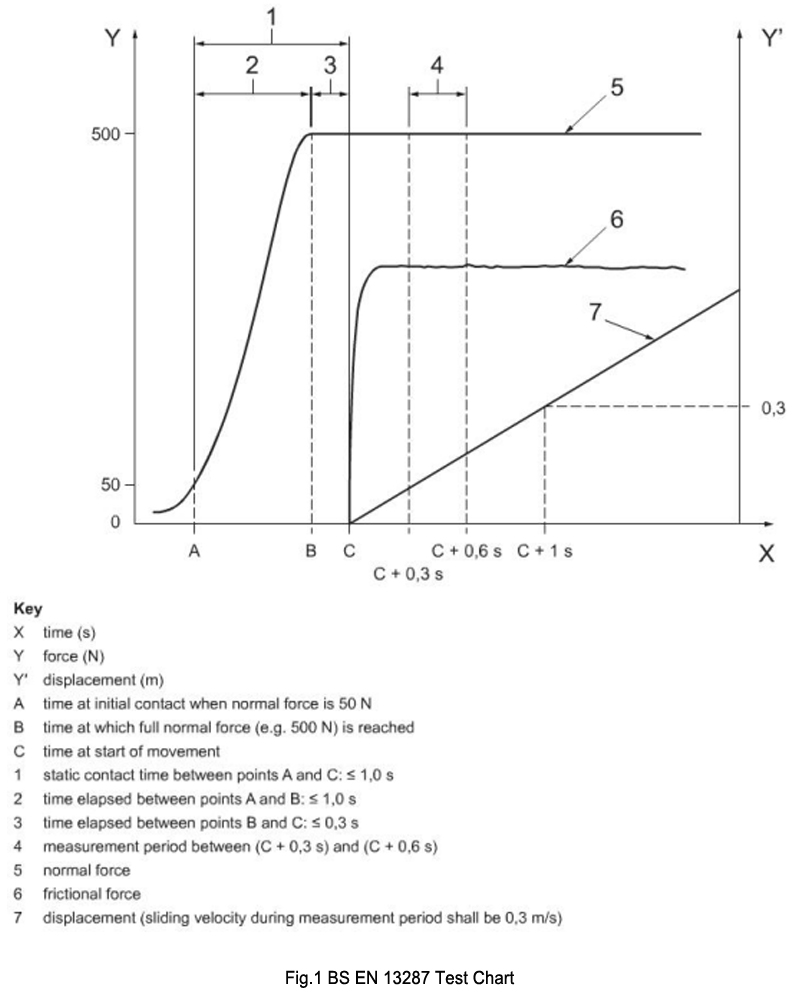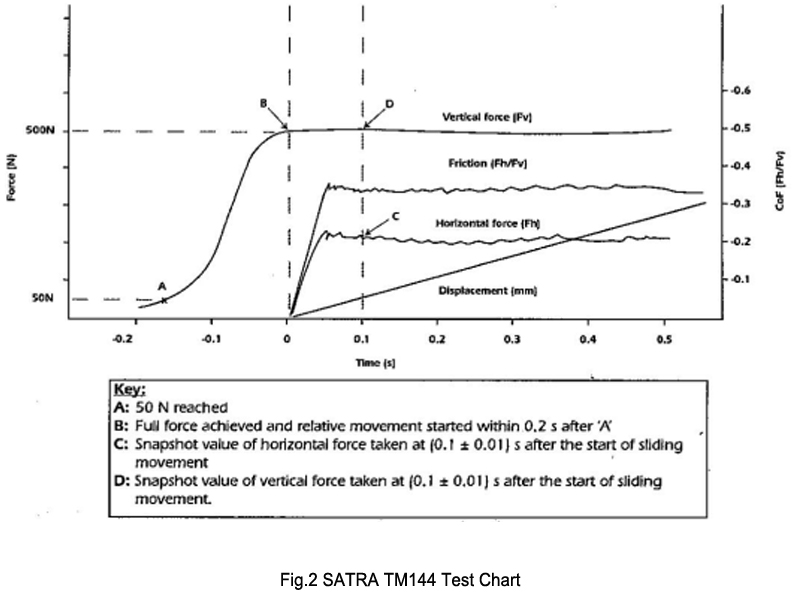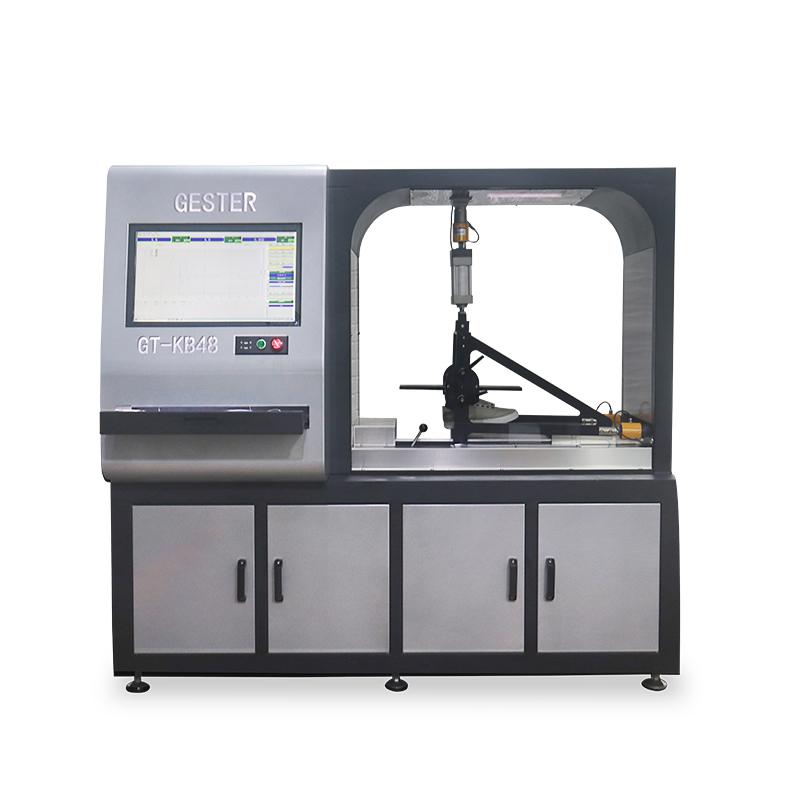In our daily life, no matter what shoes you are worn, what type of floor is walking. The sudden slip accident would occur often which would cause the injury to people.With recent technological developments, footwear manufacturers are constantly introducing new types of sole materials. The anti-slip index of the shoes is a very important data, which may determine whether the shoes could win the good graces in the international market.
At present, footwear slip data is obtained through institutions that meet international standards. BS EN 13287 and SATRA TM144 are the most authoritative standards. Both standards provide a detailed and rigorous description of the test methods and test materials, including: the various materials used as the floor, the way the shoes are in direct contact with the floor (only the forefoot touches the surface to be tested, only the heel contacts the surface to be tested) And the entire sole is in contact with the surface to be tested), the test procedure and the method of obtaining the data (normal force, friction, friction coefficient).
GESTER has been committed to the development and production of various types of test instruments in line with international standards. At present, our company has launched the footwear slip resistance tester GT-KB48 for footwear anti-slip test. This machine complies with BS EN 13287 and TM144.Let's take a look of the difference during testing between BS EN 13287 and SATRA TM 144.
BS EN 13287 Test Procedure:
Step 1) Firmly install the shoes on the shoe lasts or mechanical feet. Be careful not to have any slippage or looseness; if so, it’s necessary to take anti-slip measures (such as: playing paper towels in the shoes or double-sided tape on the bottom of the mechanical foot) . Apply a suitable lubricant to the shoe, uniform thickness, about 1mm thick, and place the floor material to be tested on the motion test platform.
Step 2) Lower the fixed shoe to the surface to be tested so that the shoe is in contact with the test surface. There are three ways of contact (only the forefoot contact surface, only the rear heel contact surface, and the full sole contact surface). The forefoot contact and the rear heel contact require a 7 degree angle block to allow the shoe to contact the surface at an angle of 7 degrees. The three methods must ensure that the relative movement direction of the shoe and the test surface are opposite and parallel. In order to simulate the scenes in life.
Step 3) After the shoe contacts the surface, apply a pre-plus normal force (50N) in a vertical downward direction, reach a normal force of 500N in 1s and prepare to slide the test platform. The force at this time is called static contact force and arrives. Sliding started within 0.3S after 500N, and the sliding speed during the test was 0.3 m/s.
Step 4) The data between 0.3s and 0.6s after the start of sliding is the measurement interval of the average frictional force, and the length of the measured interval is 300ms. At the same time, data such as friction and friction coefficient are calculated.
Step 5) Put the shoes on the floor without touching the floor, adjust the floor to the initial test state, and start the next test, a total of five tests. Take the average of five results. That is the test result.
SATRA TM144 Testing Procedure.
Step 1-2) Basically the same as steps 1 and 2 of BS EN 13287 described above.
Step 3) The shoe touches the surface and applies a pre-added normal force in a vertical downward direction(50N),achieve 500N normal force within 0.2S (200ms) and start sliding test platform,relative motion between shoes and floor at a speed of 0.3 m/s, sliding distance at least 40 mm.
Step 4) Get the data at 0.1s after the start of sliding(Friction, coefficient of friction).
Step 5) As described above in step 5 of BS EN 13287
In terms of test conditions, SATRA TM144 test conditions are more stringent. The time required for the pre-loading of 50N to the normal force of 500N is shorter, which is 0.2S (200ms). This has a very high requirement for the instantaneous running speed of the tester and the acquisition of various force values, as well as a very high precision requirement. The time specified in BS EN 13827 is within 1s, and the requirement of start-up time is no so strict. The sliding distance of 40 mm is also specified in SATRA TM144, but not specified in BS EN 13287. In terms of values, SATRA TM144 specifies data at (0.1±0.01)s after the start of sliding, it can be said that it is a single data result (in special cases. BS EN 13287 stipulates that the frictional force shall be measured over the measurement period between 0.3 s and 0.6s after the start of sliding movement. Compared with SATRA, the range of values is a little wider, the number of values in this interval directly depends on the accuracy of the measuring system of the testing machine. The higher accuracy, the more points to be taken. This also explains the test machine that can do the SATRA TM144 anti-slip test, and may also meet the test requirements of BS EN 13827. Let's use the test curve to analyze and see.

In this figure, the time between 50N and 500N is within 1s (that is, the time between AB points). There is a stagnation time of less than 0.3 seconds between acquiring 500N and starting sliding (that is, the time between BC points). The measurement data range is between 0.3s after point C and 0.6s after point C. The friction data of this test is determined by taking the average value in this range.

In this figure, the time from 50N to 500N is within 0.2S (200ms), and the sliding can begin when 500N is reached. Without stagnation time, 0.1s after sliding is the data acquisition point. Friction and friction coefficient are determined here.
Based on the above introduction, we have made clear the difference between the two authoritative standards in the anti-slip test method, the GT-KB48 Slip Resistance Tester introduced by GESTER is also a testing machine that meets both standard test conditions. Current test standard can be selected in control software, this is a great convenience for customers. And we are constantly improving the function of our machine, in order to provide more professional, high-precision and beyond customer expectations for the purpose of testing experience, so that we become one of the best choice in the instrument and equipment market.

Of course, there are many rules and instructions on footwear materials, floor materials and lubricating media in the standard. These contents are more. We will list some materials for testing in the next article for discussion.